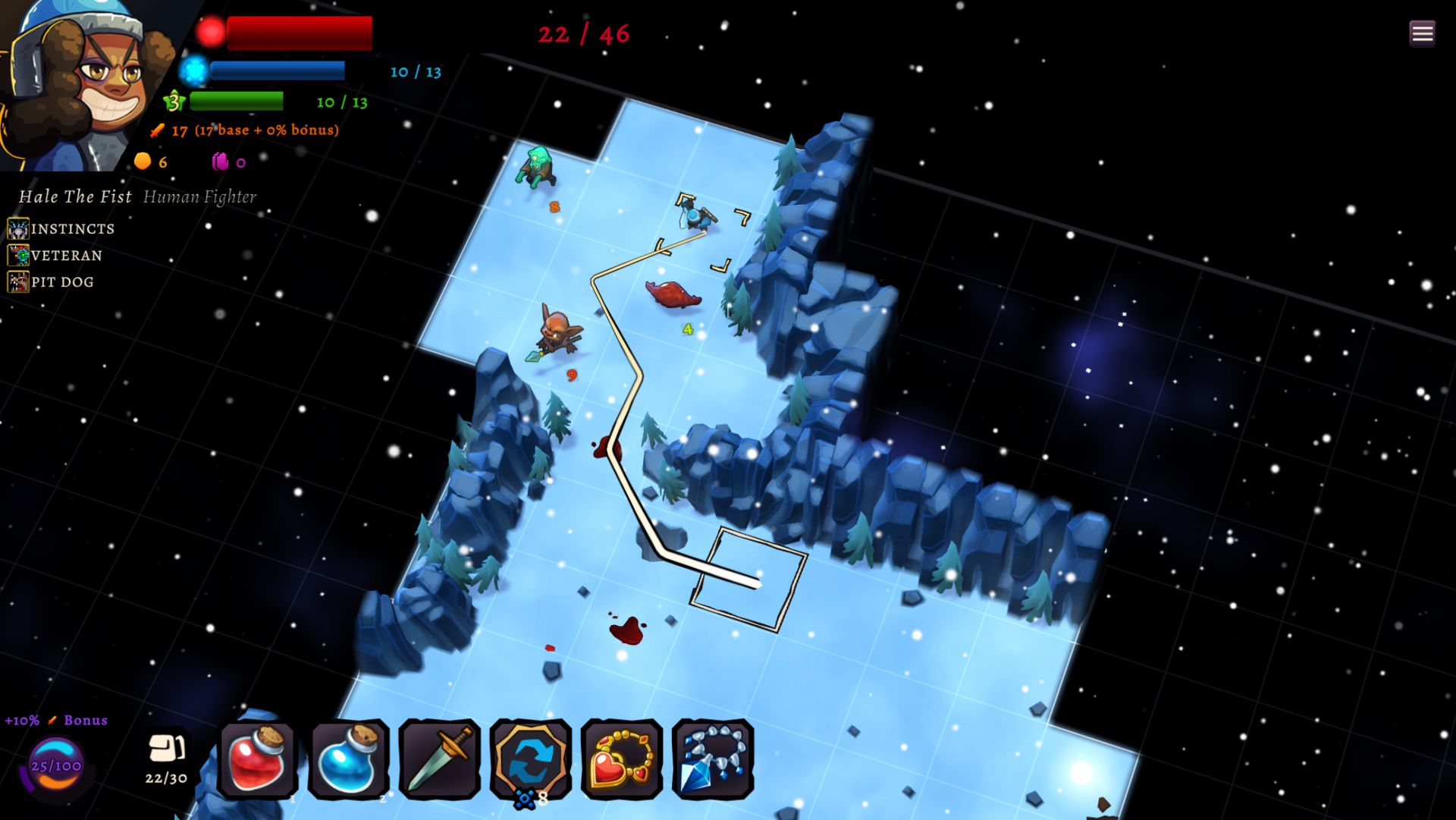Desktop Dungeons: Rewind retains the addictive puzzle dungeon grinding of the original title, with a fresh coat of 3D paint to help bring its world to life. Desktop Dungeons: Rewind is a roguelike dungeon crawler that is light on story. The player runs a small town in a fantasy world that is beset on all sides by dungeons filled with monsters. As the leader of the town, they must buy new buildings in order to unlock classes, playable races, and equipment, in a loop that will be familiar to fans of Rogue Legacy‘s generational gameplay. The quests in the game are tied to dungeons, where the player must kill the boss and take a trophy from its body, earning gold that can be spent on town upgrades.
Individual dungeons are the core part of Desktop Dungeons: Rewind and its level design will surprise fans of standard fantasy dungeon crawlers. Desktop Dungeons: Rewind is turn-based, but only the player character moves around the battlefield, with all monsters remaining static. The dungeon is composed of a grid that is shrouded in a fog of war. If the player uncovers the fog of war by moving toward it, then their character’s spent hit points and mana score will heal.
This is a key aspect of the game, as the randomly generated roguelike dungeons in Desktop Dungeons: Rewind are all a unique puzzle unto themselves, with the player needing to utilize the healing power of exploration to their advantage. They need to be careful, however, as wounded enemies will also heal if the player moves way from them to explore. It’s a game about managing the fog of war and carefully planning moves for maximum effect.
Dungeons in Desktop Dungeons are filled with monsters with a level range of 1-10, with their level helpfully written above their head and bosses assigned level 10 as the end-goal of exploration. Dungeons are filled with loot that make it possible to kill enemies that are more powerful than the player character, the most important of which are Glyphs, which allow the player to cast spells. It’s possible for spells to deal direct damage, but buff and status effects are the best weapon available to the player, with damage boosts and First Strike being the best ways to deal with higher level monsters and level up quicker. It’s also possible to “Convert” unwanted items and Glyphs, which destroys them in order to boost the player character’s abilities.
The player starts out with the tabletop RPG’s favorite, the human fighter, as their only option for exploring dungeons. As they complete quests and upgrade the town, they’ll unlock different races and classes to use in the dungeon. Different race/class combos on offer let the player approach the game with a number of different playstyles, such as the elf fighter increasing their maximum mana score from conversion, making it easier for them to cast spells.
The appeal of Desktop Dungeons: Rewind is in how easy it is to pick up and play. The average dungeon can be completed in 5-10 minutes and the gold earned from completion will let the player improve the town or buy gear for their next character. It’s this quick gameplay loop that makes Desktop Dungeons: Rewind such a repeatable game.
Alongside the main story mode, there are also Class Challenges and Puzzle Challenges to complete. Class Challenges task the player with completing a map using a specific class that is tailored for the challenge, though they are free to use any playable race they wish. Puzzle Challenges are completely structured affairs with set characters, gear, enemies, and goals, with the player needing to work out how to finish them with the tools available. These offer some fun diversions from the regular story quests and offer an extra layer of challenge for those who have worked out the game’s unusual systems.
Desktop Dungeons: Rewind is similar enough to the original game that old saves will be able to work with the new game. The most obvious improvements are aesthetic ones, with the character models and world now being 3D and a UI that is designed for different resolutions. The other big addition is a Rewind mode that kicks in when the player dies, giving them the option to return several turns in the past, giving them another shot in the dungeon. This is especially useful, as one issue with Desktop Dungeons is that the move priority makes it easy to die by misclicking on an enemy before realizing that they’ll get the first shot.
Desktop Dungeons: Rewind maintains the classic gameplay of the original game, with some much-needed visual improvements and a QoL feature that will make puzzle dungeons far less frustrating. The demo build of the game was limited in the amount of content that was available, so it’s unclear how much further the full game will go in adding content that wasn’t in the original game, but if it at least matches Desktop Dungeons: Enhanced Edition then it will still have countless hours of replayability wrapped in a single package.
Desktop Dungeons: Rewind is currently in development for PC. Screen Rant was provided with a digital code of the game for the purposes of this preview.



Be the first to comment